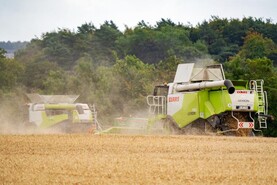Workers in meat factories are three times more likely to catch COVID-19 than members of the general population aged between 18 and 64 years of age.
The findings were made in a report published by the Health Information and Quality Authority (HIQA), which suggested that rapid antigen testing could be used to limit COVID-19 cases in meat processing plants.
The report also noted that data published up to 27 February this year showed that there were 2,796 cases of COVID-19 in meat processing plants, although it did not say whether these were in slaughter or non-slaughter plants.
Contributing factors
The report - Potential impact of different serial testing scenarios using rapid antigen detection tests (RADTs) to detect SARSCoV-2 in meat processing plant workers - also laid out a number of contributing factors.
It said that beyond environmental factors, such as EU legislation stating meat deboning rooms had to be kept below 12C, there were also shared accommodation, low wages and access to support payments that were also highlighted as contributing factors to the spread of the disease.
Capital investment required
“Significant capital investment is required to facilitate upgrading of air handling units and retrofitting of meat processing plants,” the report said.
“However, these changes will not be in place until summer 2022, as multi-site validations will be required to demonstrate their efficacy in reducing the risk of transmission of human respiratory viruses without compromising food safety.
“Therefore, additional measures are required to reduce the imminent risk of increased transmission during the warmer summer months.”
We have advised the HSE on the benefits of introducing RADTs for serial testing in meat processing plants at a frequency of once a week
With the potential for more cases, HIQA found that the preferred testing strategy used RADT-based serial testing once weekly, with positive antigen tests confirmed by the RT-PCR.
“The higher risk associated with transmission in meat processing plants is multifactorial.
“As with other high-risk settings, contributing environmental issues can include the reduced ability to social distance, cold air, limited ventilation and loud work spaces.
“In addition, a number of non-environmental risk factors exist for the sector, such as shared accommodation, low wages and access to support payments,” HIQA’s chief scientist Dr Conor Teljeur said.
“We have advised the HSE on the benefits of introducing RADTs for serial testing in meat processing plants at a frequency of once a week.”






 This is a subscriber-only article
This is a subscriber-only article











SHARING OPTIONS: